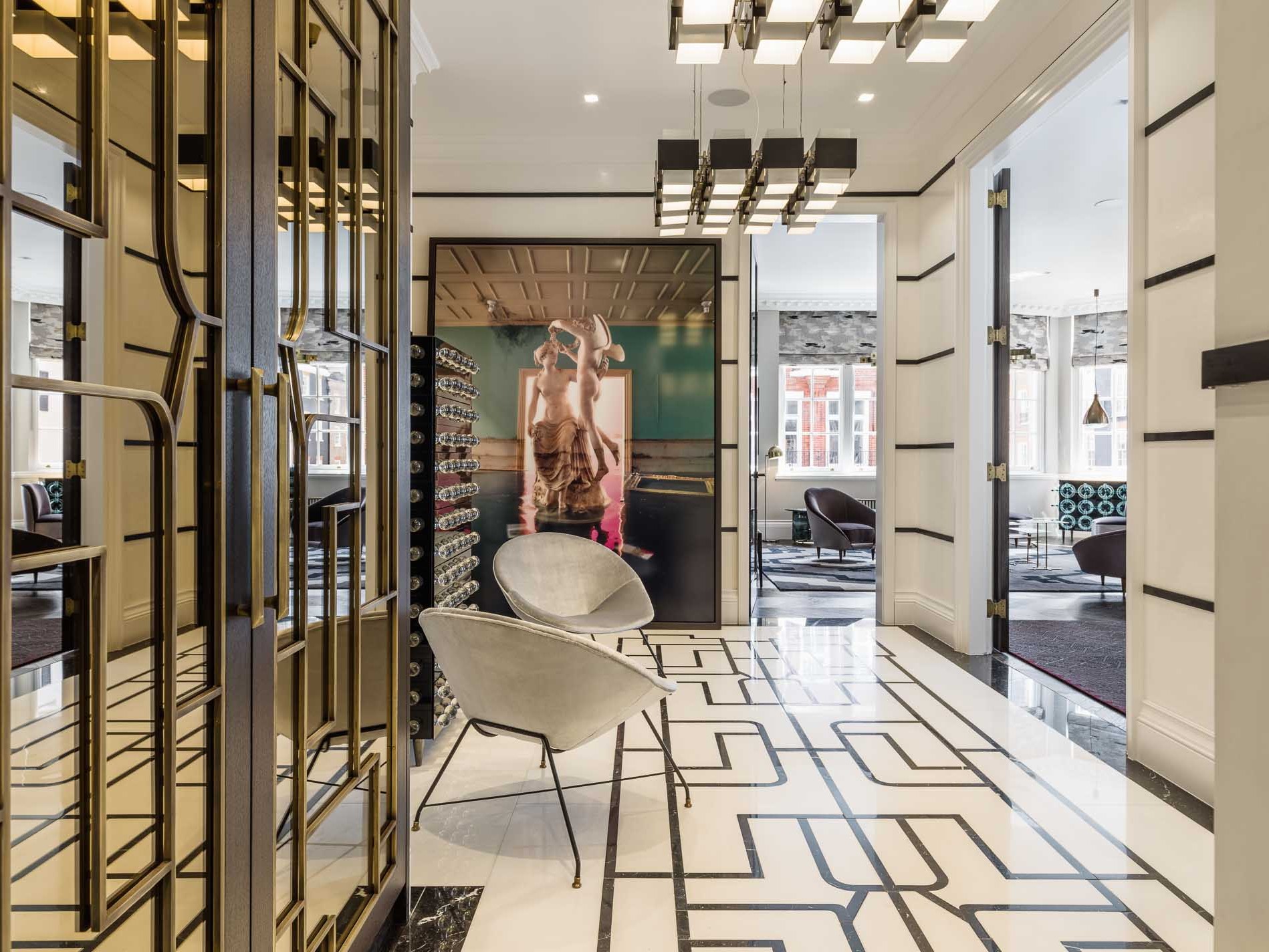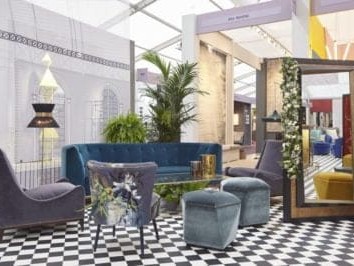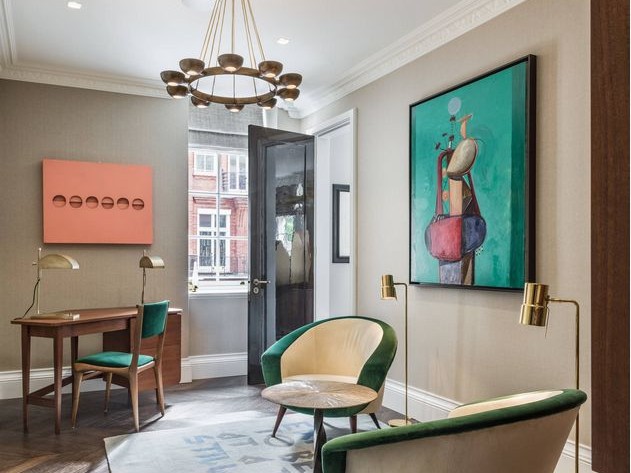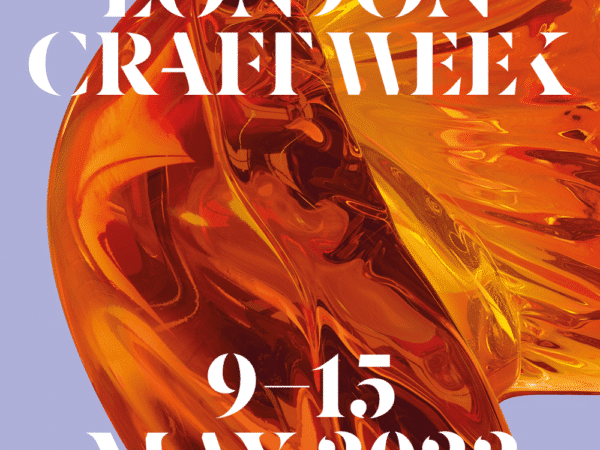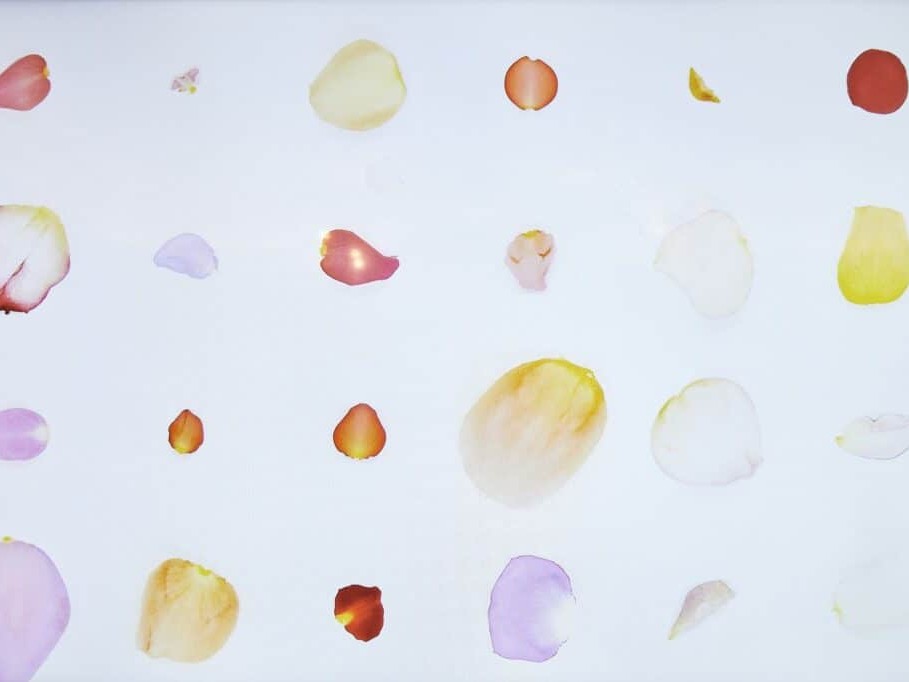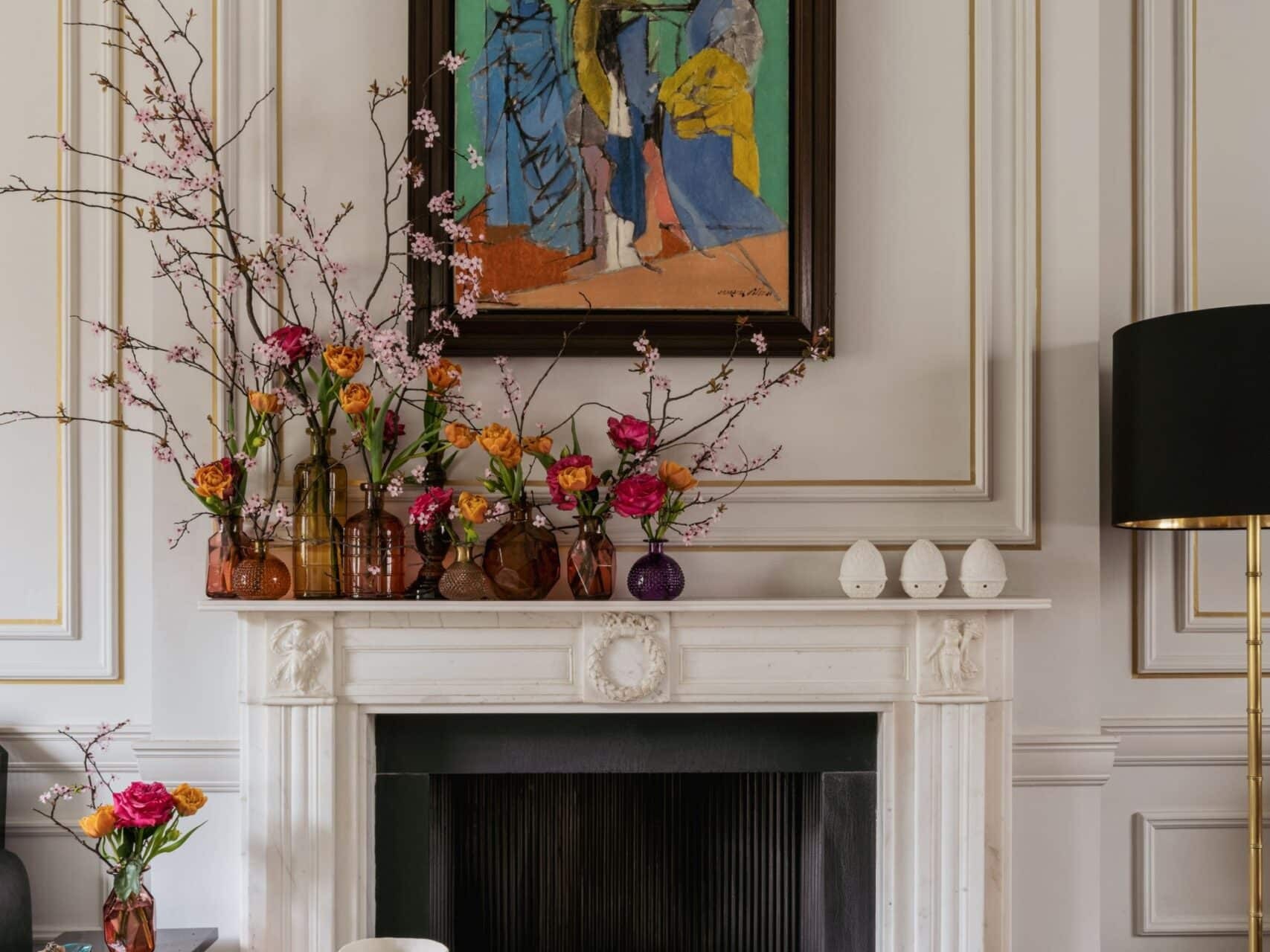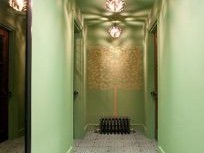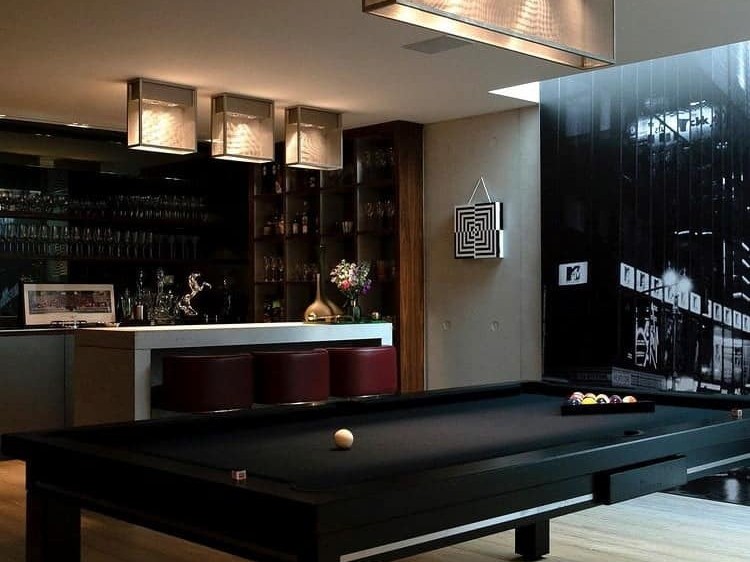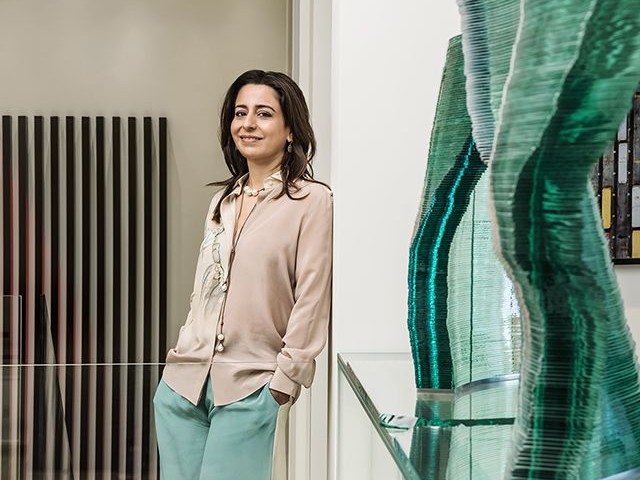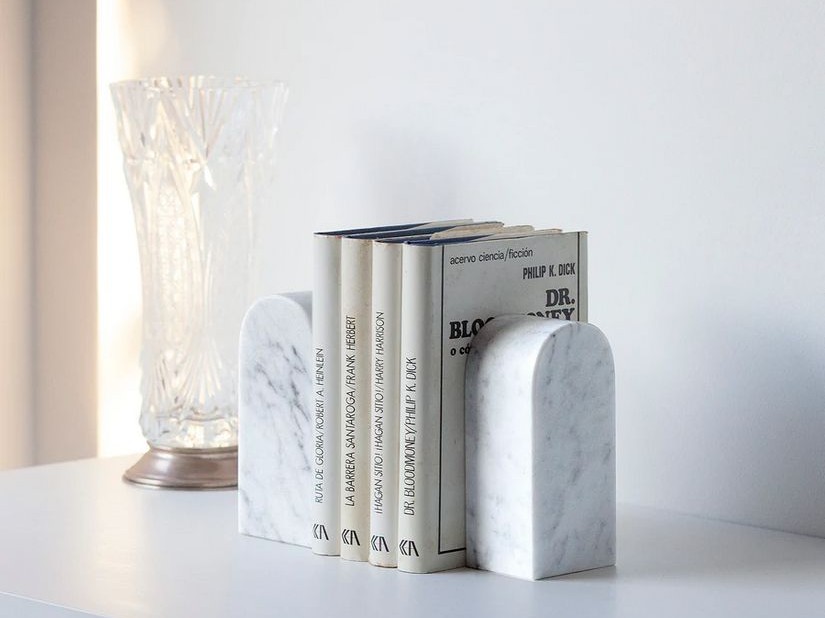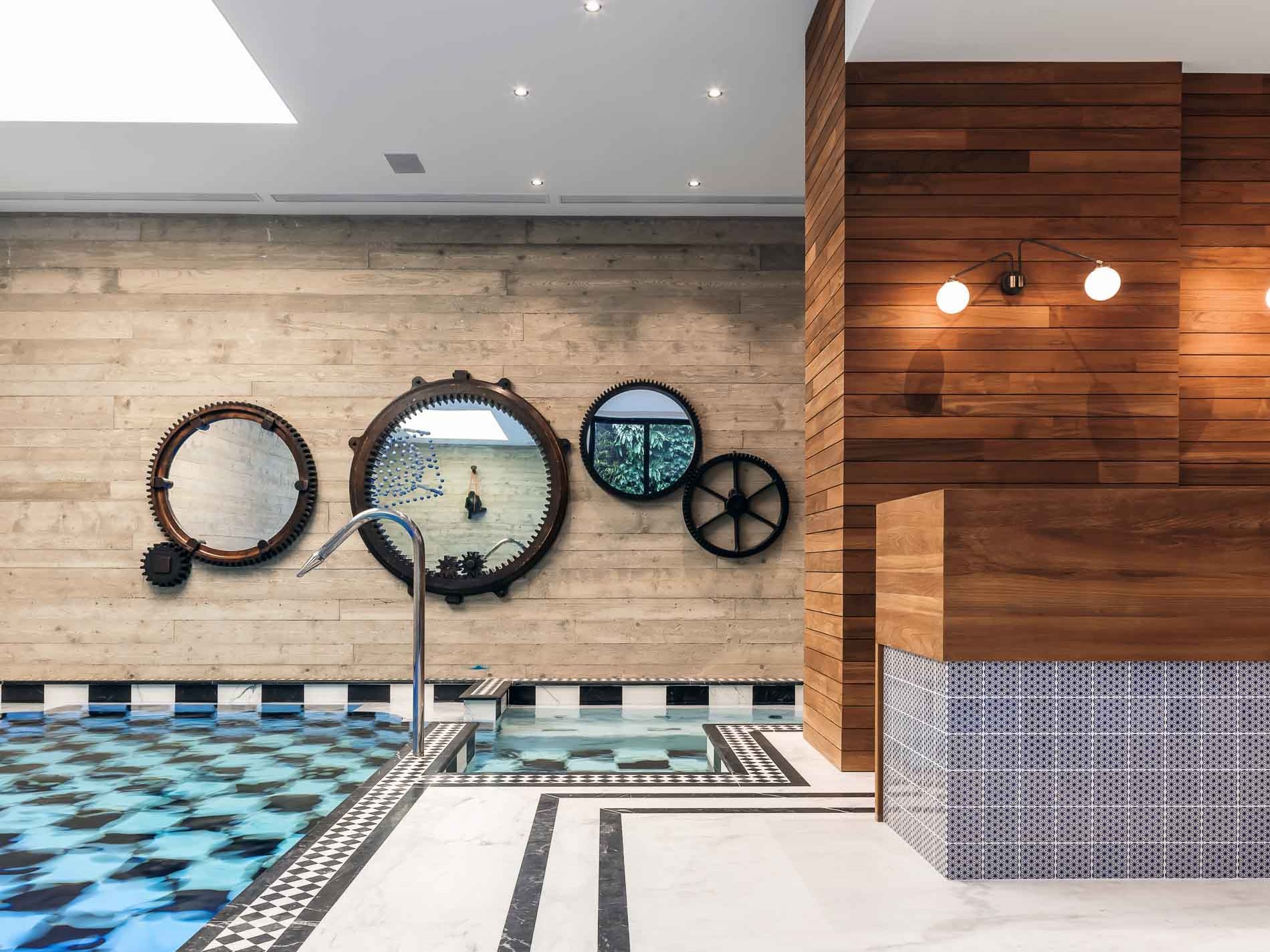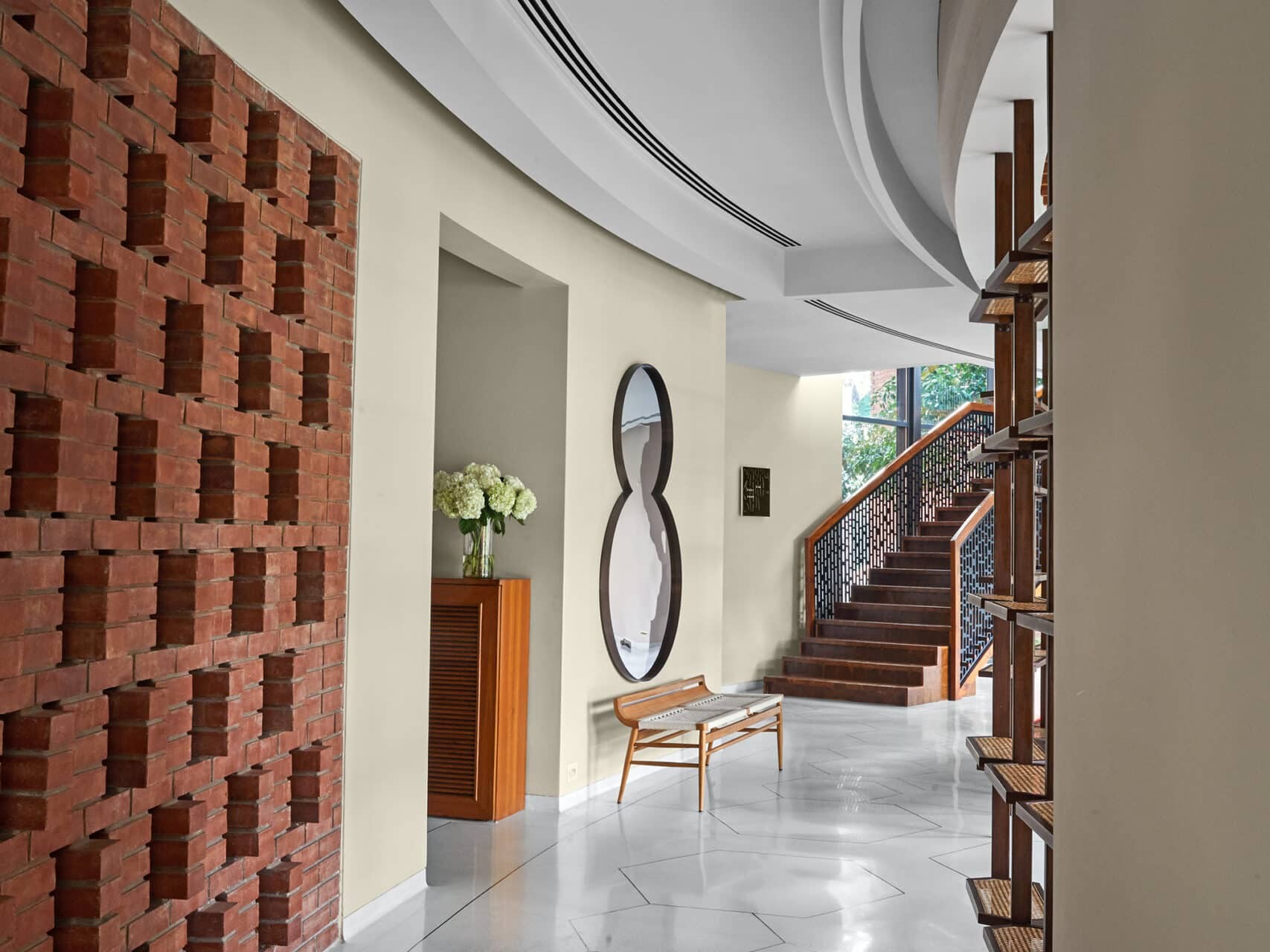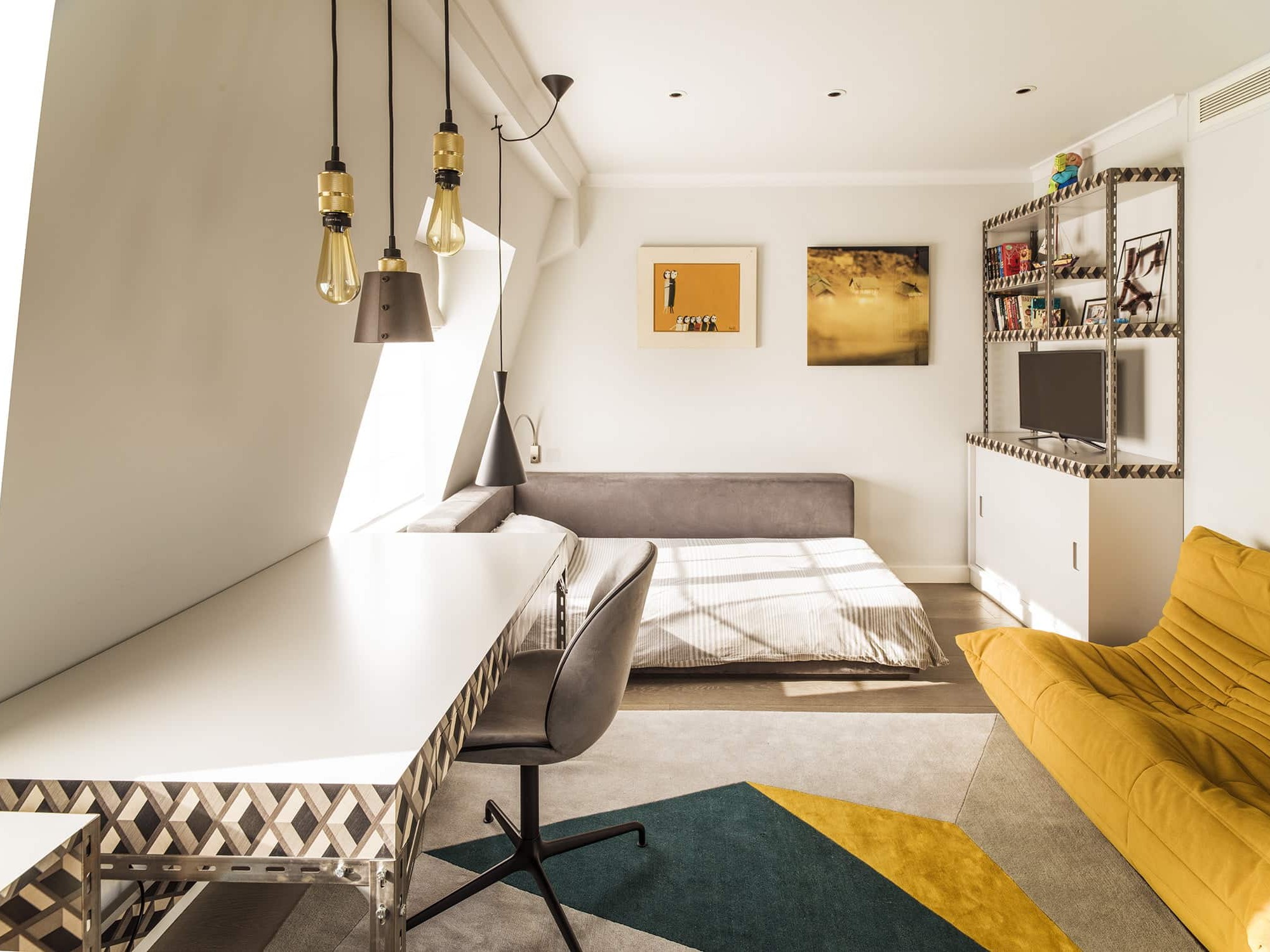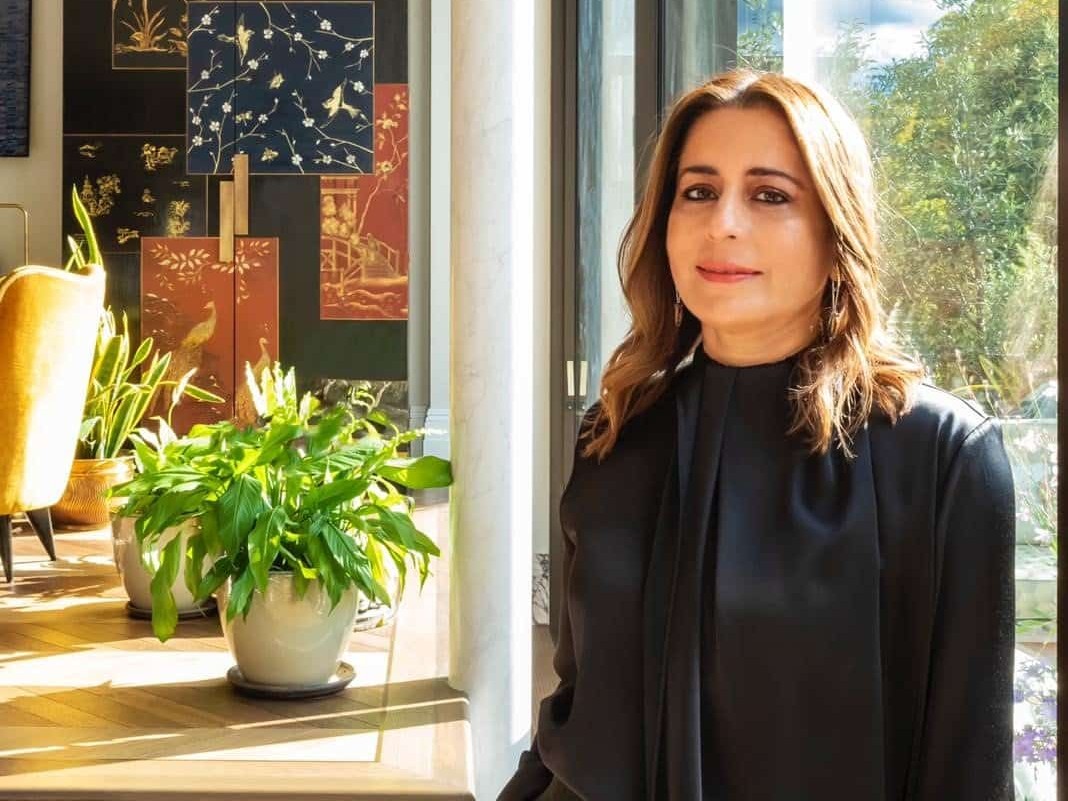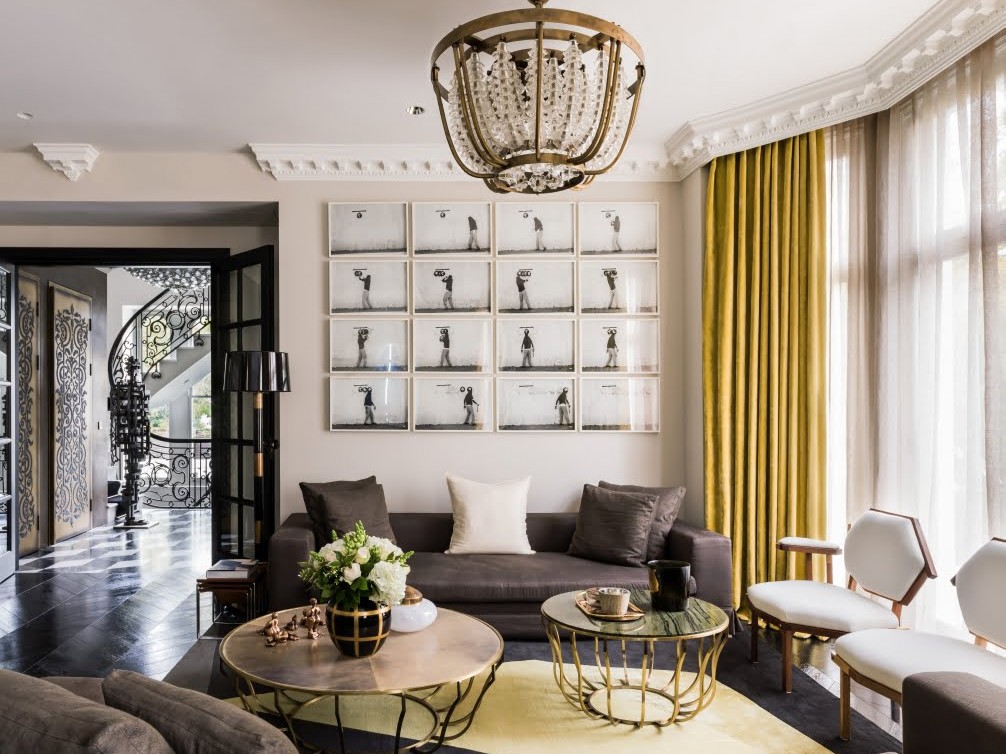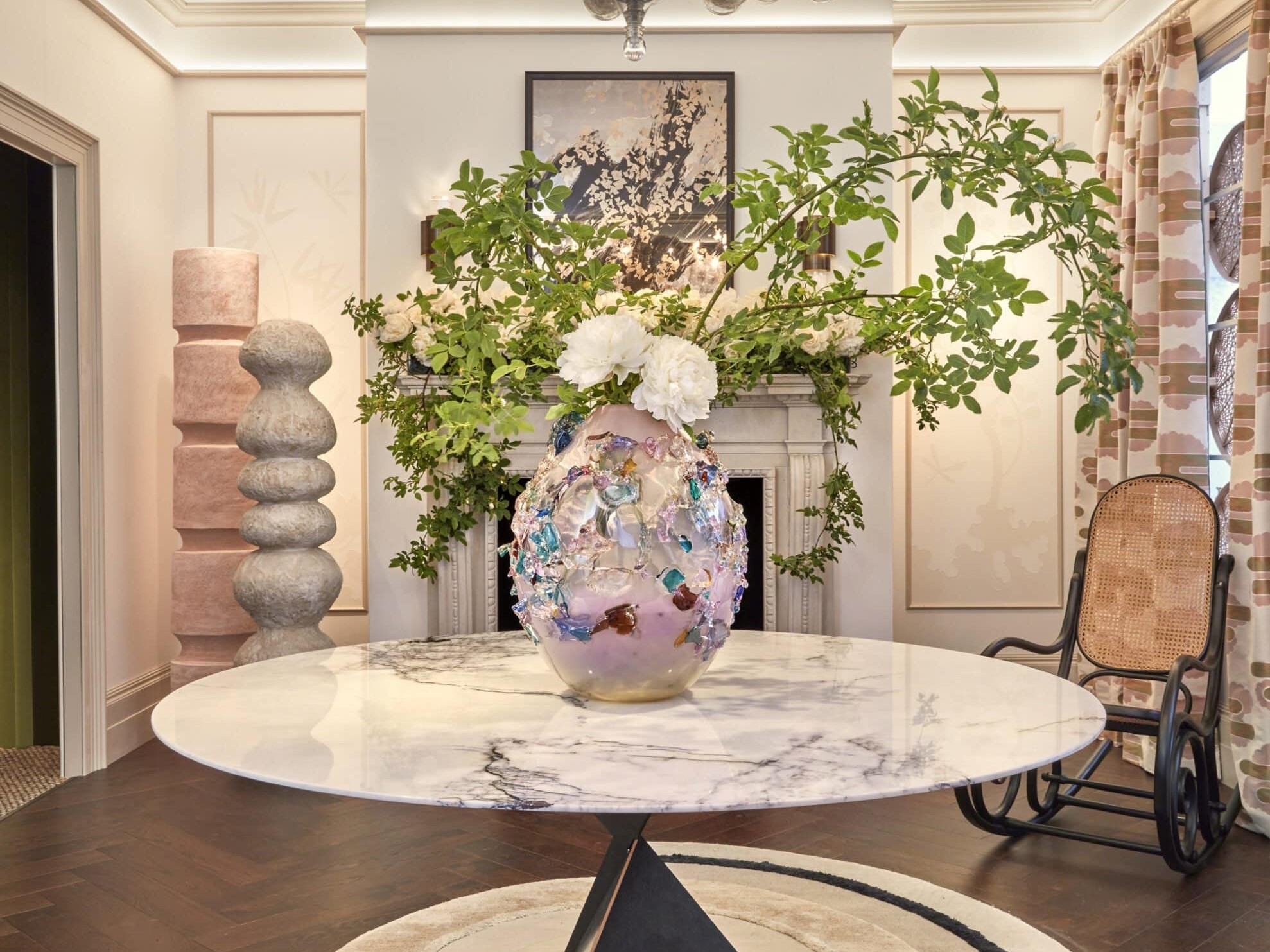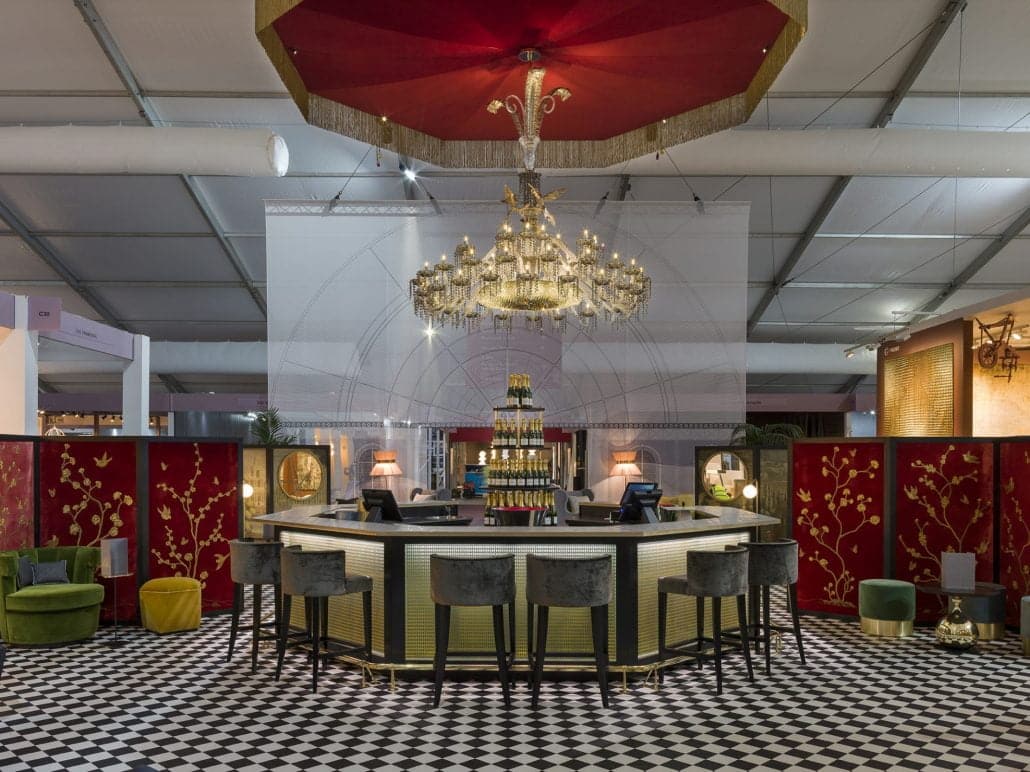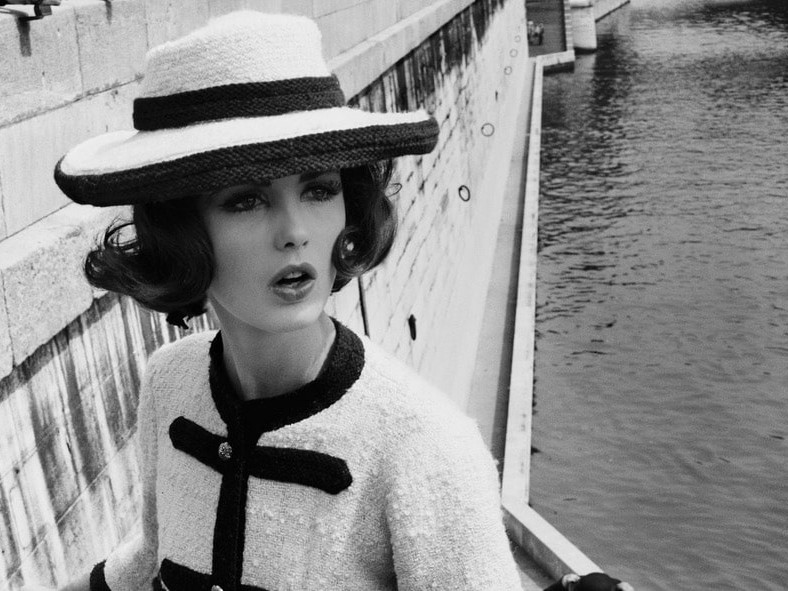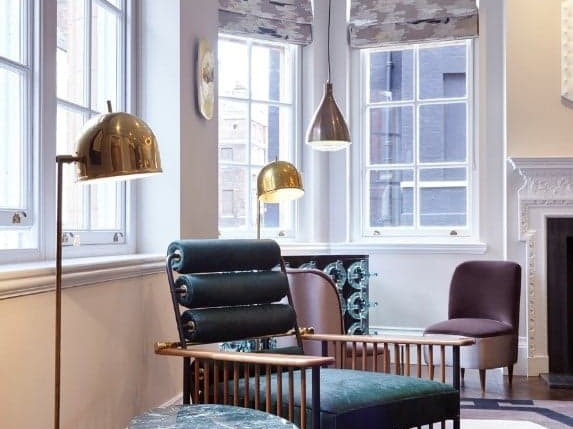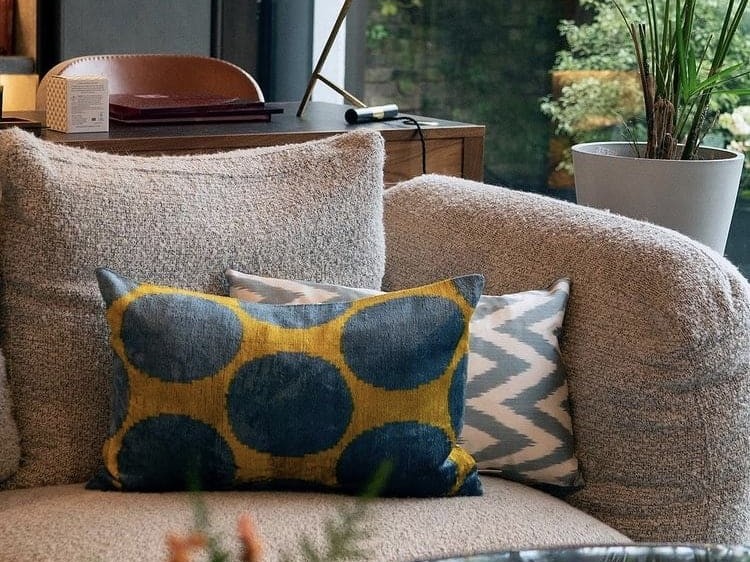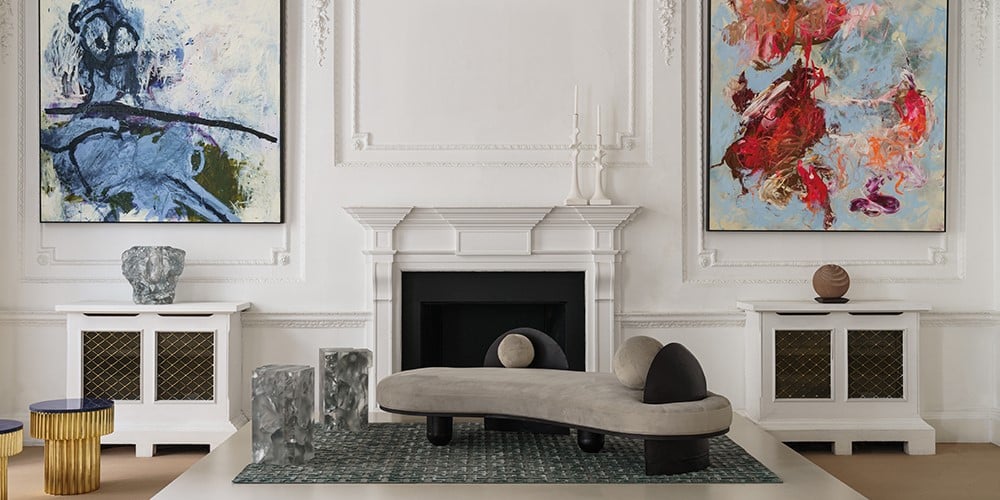
When delving into art curation, we should look to artwork to influence emotional experiences in home design. Curating an assortment of artistic elements, including sculptures, paintings, and digital and sound art, enhances interiors with depth and embellishment. To start with, utilise these design tips to enable your curated art to weave a narrative and elevate the overall aesthetics of your personal space.
1. Create an Inviting Entryway
Designing an entrance foyer is akin to curating an art gallery, offering a space for intriguing artwork, where walls can be adorned with paintings and mirrors or a console can be utilised to display sculptures, artifacts, and relics. Keep in mind that the entryway of your home is the first part of the interior that your guests will experience, and it’s also the last space they see as they depart, carrying that enduring last impression through its art.
Silhouette blue mirror by Elizabeth Kent studio is a circular mirror artwork that plays with reflection, shadow, and captivating patterns through layers of designs and hand-painted forms, contrasting with the central silver mirror silhouette.
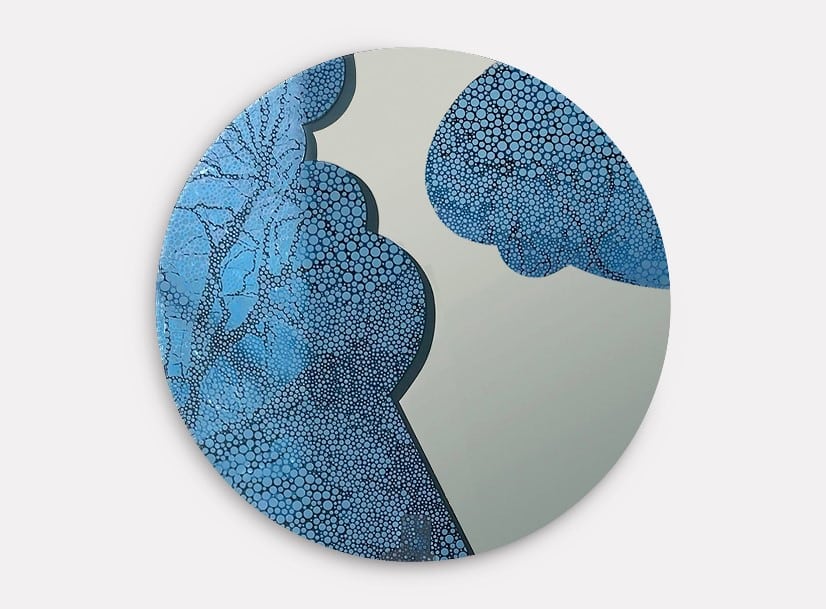
2. Make Stair Walls Spectacular
A staircase of some kind gives you a great opportunity to transform an ordinary feature into a stunning spectacle by using its walls for artistic display. Placing artwork on the staircase generates a seamless flow of engagement, inviting viewers to experience the piece at different levels from above, below, and at eye level. Additionally, the pieces usually reveal their intricate details gradually as one approaches, fostering an immersive and captivating interaction.
Raffaella Benetti Pietra Filosofale Sculpture by Gardeco, an intricate artwork, delves into the interplay of form, colour, and light, combining a patinated bronze sculpture with intricately carved stone. When illuminated by a spotlight, its gold leaf centre gleams, creating a luxurious effect.
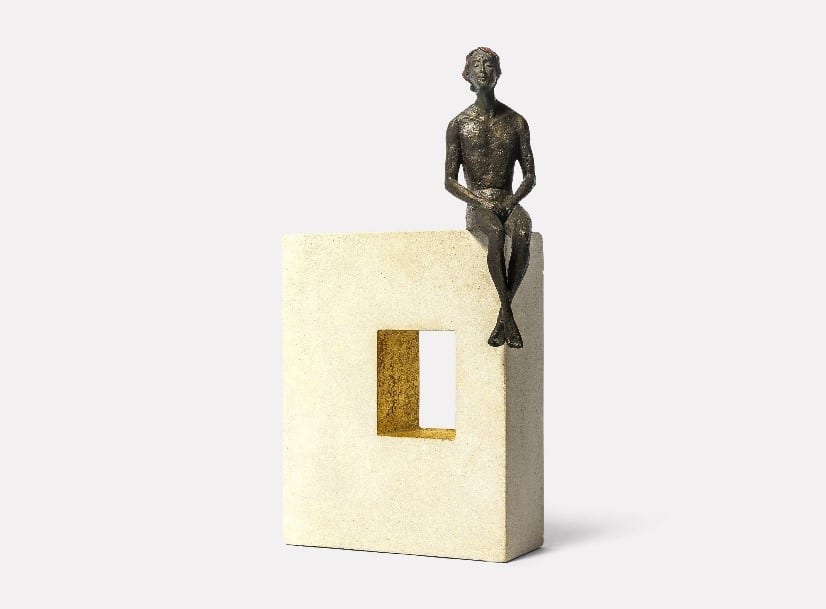
3. Integrate Art Seamlessly Within the Design
Art has the potential to spark the inception of a room’s design or can transform into the final piece that unifies all the design elements together, with artworks strategically grouped to stimulate dialogue, convey narratives, or attain visual harmony. When curating art, focus on achieving harmony among pieces, whether by refining current collections or crafting new ones, aiming to elevate both the interior design and the artistic compositions.
4. Contemplate an Invigorating Colour Palette
Artworks can often impact the room’s colour scheme, especially with canvas pieces, and using the same medium like paint to group multiple works generates interesting wall compositions. A group of paintings and sculptural artworks can build a rapport, as they interact through their palettes, shapes, and subject matter, creating a dynamic interplay.
Matteo Cibic LULU cabinet by Scarlet Splendour showcases an elliptical brass and resin web, designed by Matteo Cibic is centred around a brass eye-lip motif. Its doors reveal an opulent gold interior with organised storage, blurring the distinction between sculpture and furniture.
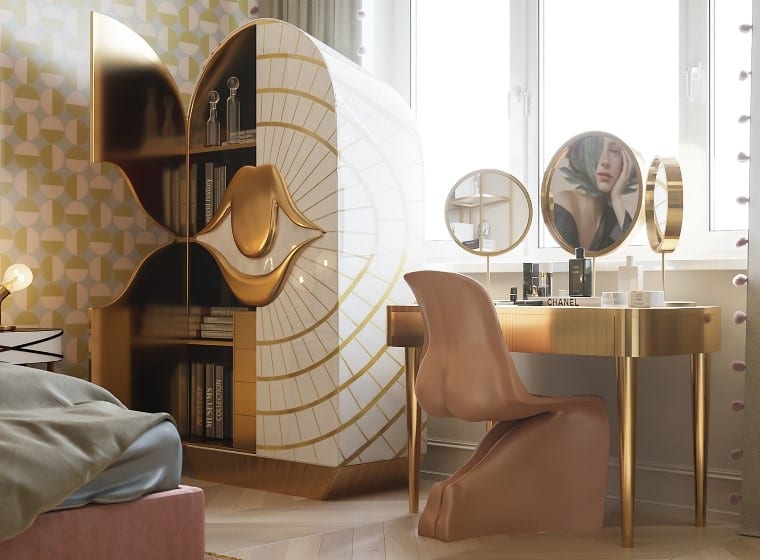
5. Create a Focal Point
Art profoundly influences interiors, with specific spaces such as atriums or double-height walls seeking standout pieces to establish focal points. The artwork’s size alone can wield a potent impact, whether decorative or functional, spanning entire walls, and conveying bold narratives. Positioning art requires considering the interrelations among pieces and ensuring a seamless flow between spaces, transcending individual areas.
6. Experiment with Multimedia
Art today spans diverse media, encompassing sound, digital, neon, and calligraphy. Sound art and digital art surprise spaces, ranging from narrated stories to nature’s sounds, and dynamic visuals, creating surreal room experiences.
Kutluğ Ataman’s digital art ‘Bosphorus’ graces a kitchen’s communal spot, capturing Istanbul’s sea moods on a dual-screen display, reimagining the traditional TV setup.
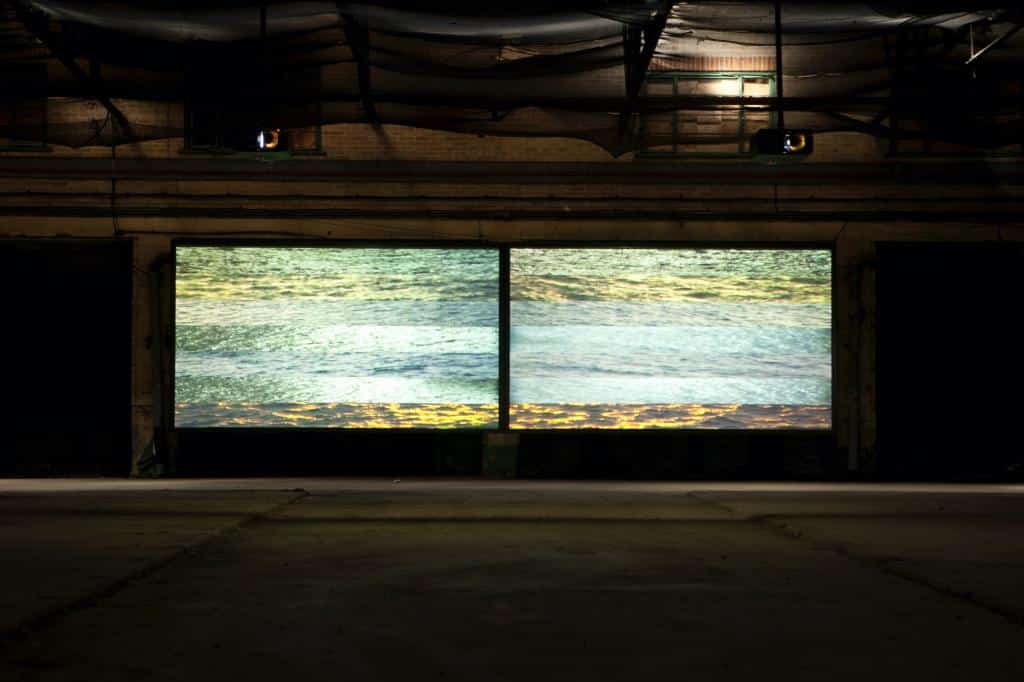
7. Fuse Indoor and Outdoor Spaces
Allow indoor art to seamlessly extend outdoors through artfully positioned clusters of handmade pots, installations, sculptures peeking from shrubbery, and strategically placed seating, resulting in a surprising blend of human and natural elements. Also, positioning a garden sculpture in an unexpected spot draws you further into the space while lush shrubs and small trees planted in pots on terraces and patios create a vibrant outdoor backdrop.
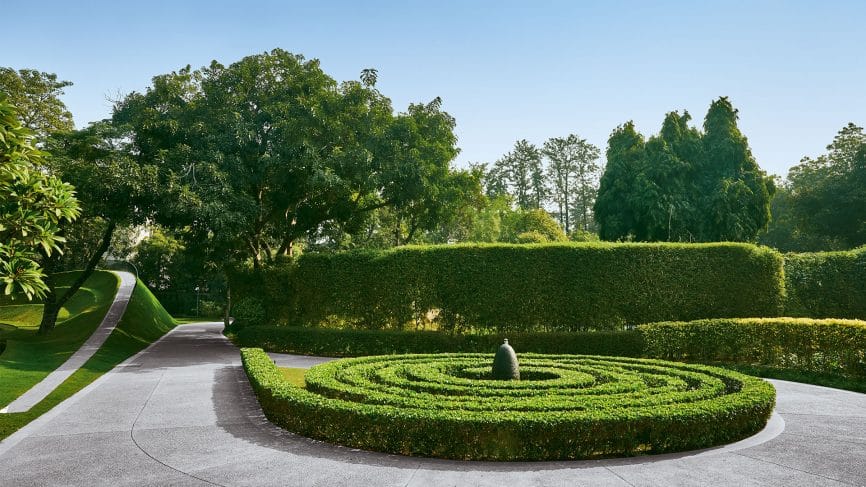
Artwork is Simply the Soul and an Essential Finish for your Home
Artwork holds a profoundly personal essence, as each individual discovers beauty in unique pieces that come alive through their distinct arrangement, infusing a luxe vibe.
Related articles
Home Staging and Styling To Help Sell Your Home
We uncover the strategic design and decorating tips to increase your chances of a quick sale.
Wabi Sabi Design Principle
Learn all about the Japanese design philosophy, rooted in simplicity, authenticity and imperfection.
What Would Coco Do?
This week the V&A opens its fabulous new exhibition, Gabrielle Chanel: Fashion Manifesto.
Few would argue that Gabrielle Chanel was a true creative visionary, and in many ways she wrote the rulebook for contemporary style. Thinking of some of her most quoted wisdoms - we can't help but notice how relevant they also are for interiors...


